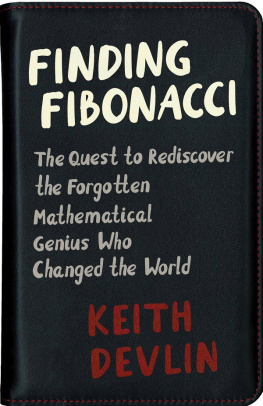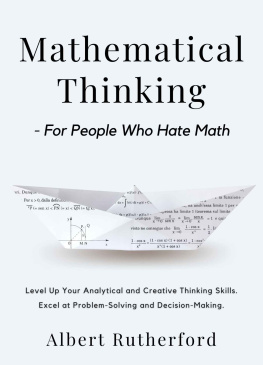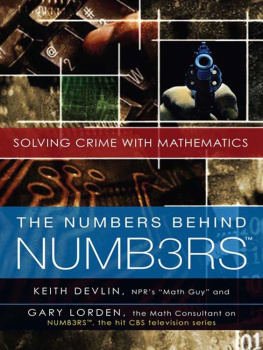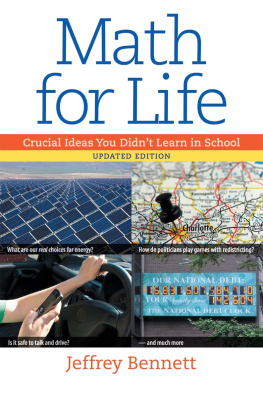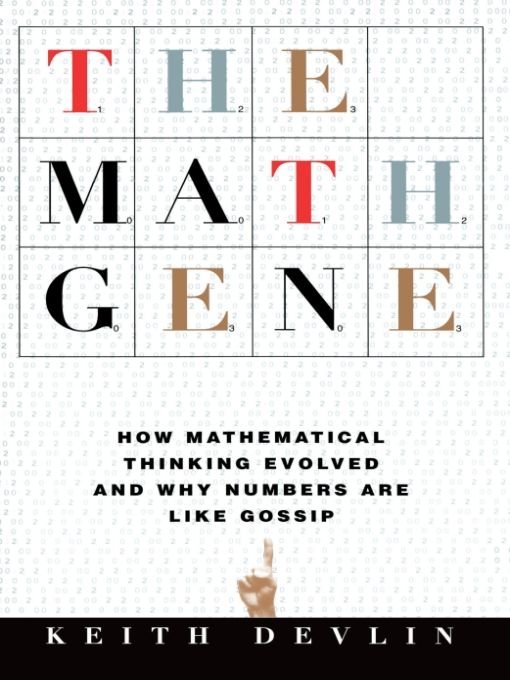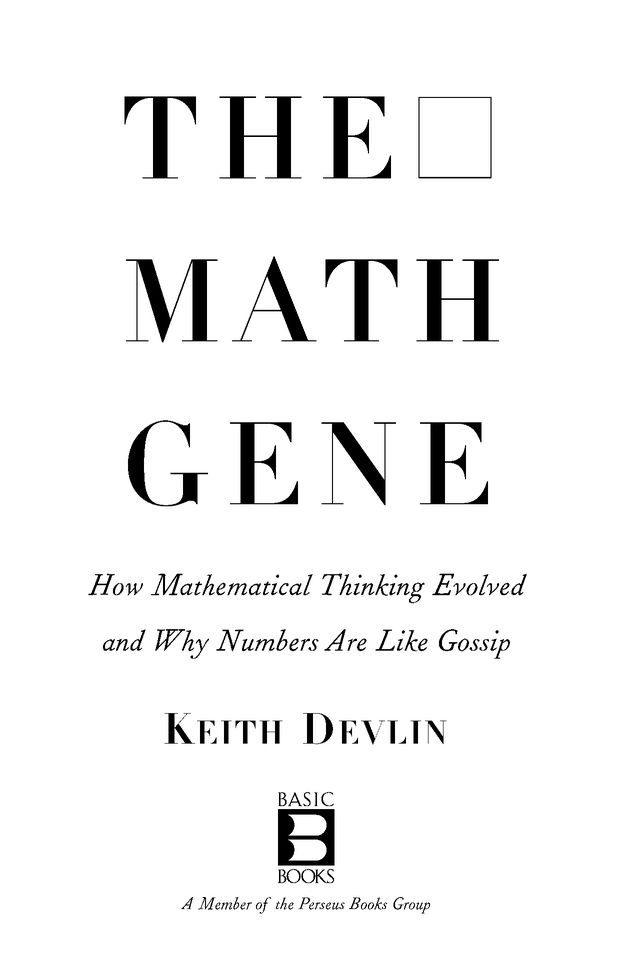Table of Contents
Table of Figures
ACKNOWLEDGMENTS
ALTHOUGH this books thesis is consistent with all the evidence that I am aware of, I knew from the start it would be controversial. Some of the scientific territory I cover is hotly debated. Accordingly, I showed a few appropriate individuals my manuscript before sending it out for publication, so that I could test how well I had made my case. Derek Bickerton, Margaret Wertheim, Jeff Raskin, and J. D. Phillips all read it and offered useful suggestions, and I wish to express here my gratitude to them.
My debt to Bickerton is particularly significant. I first started thinking about the questions addressed here about twelve years ago and began to write a first draft about five years ago. As I started to assemble the various pieces of the puzzle, I realized that an important piece was missing. That missing piece was eventually supplied by Bickerton, through his book Language and Human Behavior. I had consulted it when it was first published, since I wanted to present Bickertons account of the emergence of Hawaiian creoles in my own book Goodbye Descartes, which I was writing at the time. In 1997, when I was starting to write this present volume, I read Bickertons book more thoroughly. Once I had fully understood his account of how and why the human brain acquired language, everything fell into place. (Bickerton, in turn, says he was inspired in part by William Calvin.)
At the same time that Bickerton was unknowingly supplying the key piece of my puzzle, Stanislas Dehaenes excellent book The Number Sense came out. Although our two books address very different questionsDehaenes focus is numerical ability, while my argument deals mainly with what is sometimes called higher mathematics (i.e., logical reasoning about formally defined patterns or abstract structures)in one place there is considerable overlap. To develop my thesis, I had to look at the way the mind handles numberfirst, because the capacity to handle numbers is an ingredient of mathematical ability (and not just because arithmetic is part of mathematics), and second, because I wanted to show how mathematical thought differs from numerical computation.
The Number Sense included much of what I had to say on the way we handle numbers. Inspired by it, I extended my coverage of this topic a little by incorporating, in relevant places, some of Dehaenes examples. As a result, much of Chapters 2 and 3 now amounts to a summary of some parts of Dehaenes book. However, Dehaene says far more about the way the brain handles number than I do hereand provides more detail on the topics I do coverand I would strongly urge any reader of my book to read The Number Sense.
When my completed manuscript was in the hands of my agents, Brian Butterworths book The Mathematical Brain was published in the United Kingdom. (Its now available in the United States under the title What Counts.) Butterworth, like Dehaene, is a cognitive scientist, and, his title notwithstanding, his primary interest is also arithmetic, not (higher) mathematics. However, Butterworths book overlaps with my account less than Dehaenes doesfar less than his book and Dehaenes overlap with each other. I did add one or two examples from Butterworth, where they seemed to strengthen my case, but on the whole he and I follow different paths to different objectives.
Finally, my agents Diana Finch of the Ellen Levine Agency in the United States and Bill Hamilton of the A. M. Heath Agency in London were both enthusiastic proponents of the project from the start, and my editors William Frucht at Basic Books and Toby Mundy at Weidenfeld & Nicolson were both keen supporters. Bill Frucht, in particular, labored long and hard to help me craft the manuscript into a form that would be accessible and appealing to as wide an audience as possible.
Keith Devlin
Moraga, California
December 1999
PROLOGUE
The Wings of the Eagle
THE EAGLE HAS LANDED
THE VOICE from the spaceship Eagle, just above the surface of the moon, was clearly understandable despite the static. The other voice came from the Johnson Space Flight Center in Houston, Texas, and, not surprisingly, was much clearer. Both men spoke in short, efficient, factual statements, without outward emotion.
EAGLE: 35 degrees. 35 degrees. 750, coming down at 23. 700 feet, 21 down. 33 degrees. 600 feet, down at 19...540 feet...400...350 down at 4.... Were pegged on horizontal velocity. 300 feet, down 3 ... a minute. Got the shadow out there...altitude-velocity lights. 3 down, 220 feet. 13 forward. 11 forward, coming down nicely...75 feet, things looking good.
HOUSTON: 60 seconds.
EAGLE: Lights on. Down 2. Forward. Forward. Good. 40 feet, down 2. Picking up some dust. 30 feet, 2 down. Faint shadow. 4 forward. Drifting to the right a little.
HOUSTON: 30 seconds.
EAGLE: Drifting right. Contact light. Okay, engine stop.
HOUSTON: We copy you down, Eagle.
EAGLE: Houston, Tranquillity Base here. The Eagle has landed.
I was a twenty-two-year-old graduate student when Neil Armstrong and Buzz Aldrin landed on the moon. Today, thirty years on, I still get a deep thrill whenever I read the transcript of those last few minutes of the descent, as Armstrong guided the lunar landing craftwhich the crew had christened the Eagleto the spot where humans would first set foot on another planet.
As the culmination of a decade-long struggle to put a man on the moon (and bring him back alive), the actual landing did not represent a huge technological advance over the previous Apollo missions. To use Armstrongs own words, as he made the historic first step onto the moons surface, the Apollo 11 moon landing was just one small step for [a] man. But the symbolic importance of the event was inescapable. It was, as Armstrong went on to say, One giant leap for Mankind. Although often touted as an achievement for science and engineeringwhich it wasI have always felt that the Apollo 11 mission was much more a triumph of the human spirit, and of two mental abilities that on the face of the earth are unique to humans: mathematics and language.
Getting to the moon was heavily dependent on mathematics, which underpins all the sciences and all of engineering. Every aspect of the mission was calculated(!) to the finest detail: how much fuel to carry for each stage of the flight to the moon; what path to take so that fuel would not be wasted in correcting the path; how much fuel would be required for the landing; how much for taking off again; how long each engine burn should last; how much oxygen was needed to keep the crew alive. The dialogue between Eagle and ground control during the final descent was almost entirely mathematical. They had little room for error: after Armstrong finally maneuvered the Eagle to a safe landing, there was just ten seconds worth of fuel left.
So, it took mathematics to get to the moon. But where did language come in? Why do I say the moon landing was a triumph for language? Because the Apollo mission was a huge collaborative enterprise involving the coordinated efforts of thousands of people. Although only two men made those historic first steps on the moon, the project involved many thousands of individuals, spread all over North Americaand elsewhere on the globe, if you include the people manning the tracking stations. Language provided the thread that tied the team together and allowed them to coordinate their actions to produce a single event.


